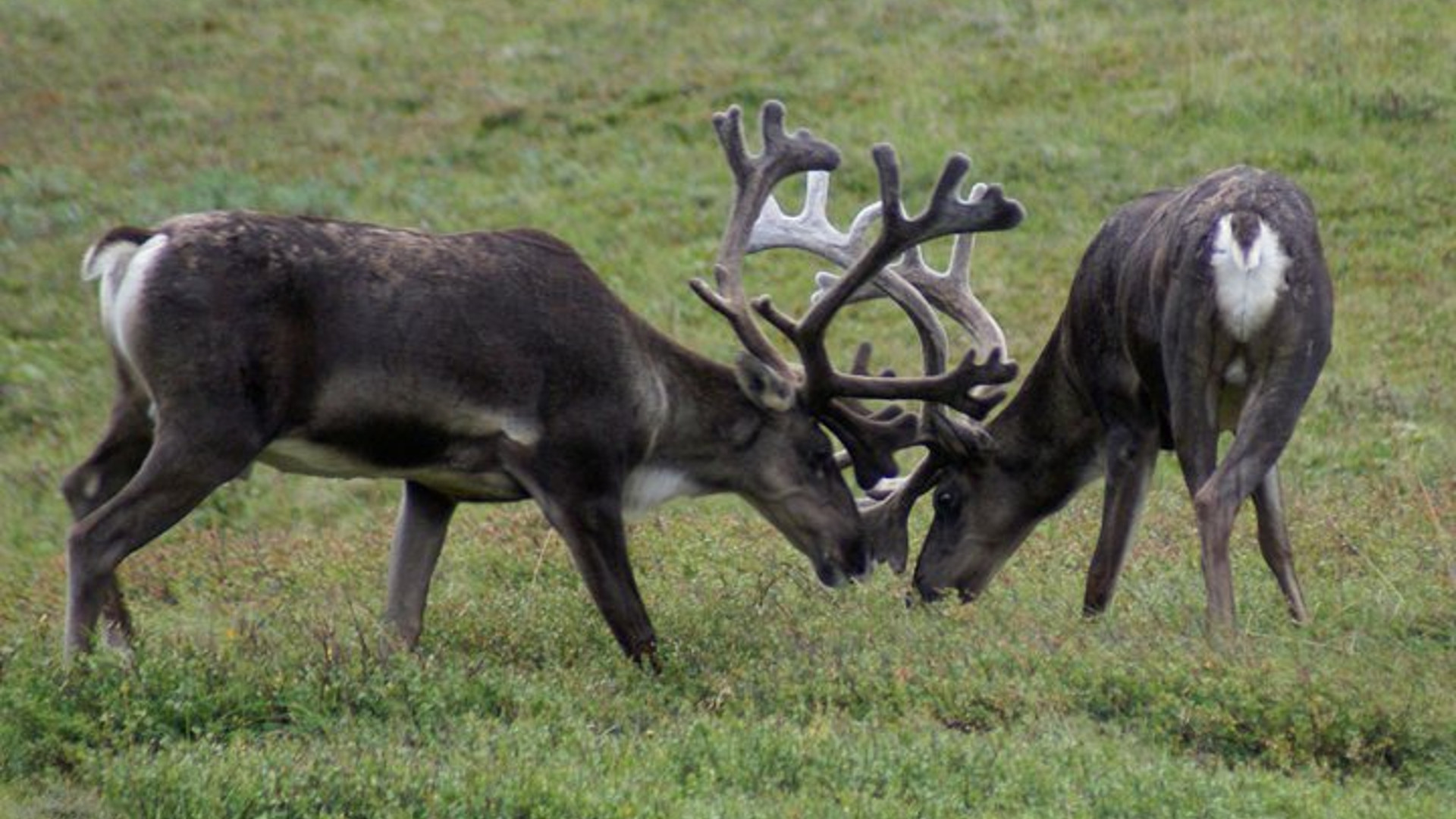Buried in the recently proposed congressional budget for 2018 is a partially cleared path for oil and gas drilling in one of North America’s last truly wild environments: the Arctic National Wildlife Refuge.
If passed, the budget would allow the House Natural Resources Committee to permit fossil fuel development in an untamed, 20-million-acre wildlife sanctuary that’s historically been off limits to human activity. The budget says drilling in the refuge is projected to raise $1.8 billion.
The budget follows Interior Secretary Ryan Zink’s proclamation last May that Alaska is “open for business.”
The Arctic refuge is not just huge and pristine — it’s also home to a vast array of species that live only in the Far North. Polar bears, Arctic wolves, foxes, wolverines, moose, musk oxen and porcupine caribou all live and breed in this territory. The coastal plain is home to some 200 species of birds that raise their young in the area before migrating around the world, including all 50 states in America.
And it has another resource, too: about 17 billion barrels of oil and 34 trillion cubic feet of natural gas, according to a 1980 U.S. Geological Survey.
Alaskan wildlife biologists like Ken Whitten, retired from Alaska Department of Fish and Game, are worried that oil drilling in the refuge will disrupt the breeding grounds and movement patterns of the native creatures there, as it did to the caribou living in the 100-mile-wide coastal plain around Prudhoe Bay. For 25 years Whitten studied the relationship between the caribou and the surrounding oil wells, drills and instances of human activity. “Caribou would tend to stay away from the equipment a distance of one to three miles,” he says. Deterred by the strange noises, structures and smells associated with oil mining, the caribou were forced east.
“If we were to experience the same sort of displacement it would drive the caribou to areas with a higher density of predators,” says Whitten. “We concluded that a displacement similar to what happened around Prudhoe Bay would have an effect of a 5-8 percent decline in calf survival. It doesn’t sound like much, but it would result in population decline. And the caribous aren’t the only species to have their habitat compressed.”
This debate over whether or not to drill for oil in such an unspoiled and ecologically important swath of land has been in the discourse for several decades, since Dwight D. Eisenhower laid out the initial protections for the refuge. But today, with the ticking clock of climate change and Trump and EPA head Scott Pruitt seemingly hell-bent on environmental deregulation and cozying up to fossil fuel interests, the debate has reached new levels of intensity.
Organization and individuals are speaking out about this issue, seemingly louder than ever. Even people that never have, and never will, set foot in the Arctic wilderness understand the importance of decoupling it from industry. And one environmental educator, Miho Aida, who actually has been to the refuge, understands a side to the story beyond its effect on wildlife: the human impact.
“Environmental issues are human rights issues,” she says.
Aida is a Japanese-American environmental scientist, educator and filmmaker who recently spent three weeks in the refuge with the Indigenous Gwich’in people, who, in many ways, would be the most affected by development in the area. She’s returned to the contiguous states with a short documentary she shot and produced called “The Sacred Place Where Life Begins: Gwich’in Women Speak.”
“I wanted to draw a connection to how these Gwich’in people are associated with the environment, the animals, the history,” Aida tells me while on tour with the film. “Development of the land would be devastating to them.”
The Gwich’in people are thought to be the area’s original inhabitants. “They were there first, they know every plant and animal,” says Aida.
And their livelihood depends on every plant and animal. According to Aida, when she arrived in the Arctic Village, a settlement right on the edge of the refuge, she felt she was in a different country. She observed that people there spoke in their native tongue on radios, tribal societal structures were recognized, and hunting and fishing was their way of life, as it had been for centuries.
The reason why the Gwich’in people oppose oil drilling in the area — although the prospect might bring them jobs — is twofold, but both deal with their intimate connection to the land.
Primarily, the coastal plain is the main breeding ground for the Gwich’in people’s main source of sustenance: the porcupine caribou (Rangifer tarandus granti). Herds of caribou raise their young near the ocean, because the strong winds keep away mosquitos, which can prove fatal to a caribou calf. Oil and natural gas drilling would surely affect their habitat, yet exactly how is unclear. But what is known is that if the caribou start to get displaced, so do the 2,000 or so Gwich’in people.
“It’s why they protect the land. It’s their lifeline,” says Aida. “Indigenous people have been fighting this kind of aggression for 500 years. These people are so resilient.”
The second reason the Gwich’in people are prepared to fight against the White House’s renewed interest in drilling in the Arctic, as they have done in the past, has to do with religion. To the Gwich’in people, the land is sacred and deeply tied to their ancestral roots, their culture, ideology, and values. Most of their songs and stories are about the caribou.
“It’s where everything came from for them,” says Aida. “It’s taboo for the Gwich’in people to go there, let alone oil crews.”
“The caribou herd and the Gwich’in are one,” says Bernadette Demientieff, executive director of the Fairbanks based Gwich’in Steering Committee. “We have made a pact with them 20,000 years ago to always take care of them if they take care of us.”
Demientieff has spent most of her career rallying the 14 communities of the Gwich’in Nation around this issue, raising awareness across the state, and putting pressure on Alaska Sen. Lisa Murkowski, a pro-development Republican.
“Drilling in such a sensitive place would be a big disaster,” says Demientieff, who feels her people’s food security is threatened under the new administration.
During one of her last afternoons in the Arctic with the Gwich’in people, Aida searched the horizon for caribou and moose with some tribal elders. She remarked to them about how stunningly quiet and beautiful the landscape was before them.
“It was so remote there,” says Aida. “Not even a road in sight.”
The elders described to her a time in their tribe’s history when the same landscape was buzzing with life, aloud with the activity of insects, mammals and birds. That was in the early 1800s before French trappers came, hunted, and “poisoned the land,” which had a lasting effect on many species there.
Now visitors have to strain to hear signs of life, and if oil interests gain a foothold in the area, it may prove difficult to see signs of life there too.
Demientieff can attest to this, as she says that she’s observed animals like polar bears, caribou and migratory birds moving farther south because of oil development in the coastal plains around Prudhoe Bay.
“Our animals are acting very strange,” says Demientieff. “And we’re losing our identity, but we’re prepared to fight for our way of life. It’s not up for negotiation.”
© 2017 Francis Flisiuk. All rights reserved.
Previously in The Revelator:
Hilcorp Alaska Avoids Fines for Cook Inlet Methane Leak
Further Reading: Arctic Ocean Drilling: Risking Oil Spills, Human Life, and Wildlife



Well, my concern is primarily for the wilderness and wildlife, though I agree that Native people shouldn’t be harmed by industrial activities either.
The main driver of this push to drill in ANWR — didn’t we just fight and win this battle, albeit temporarily unfortunately? — is our gluttonous consumption of oil. So sure, write your congressperson, demonstrate, take whatever other protest actions you wish. But if you don’t give up your car or at least get an all electric one, admit that you’re part of the problem!